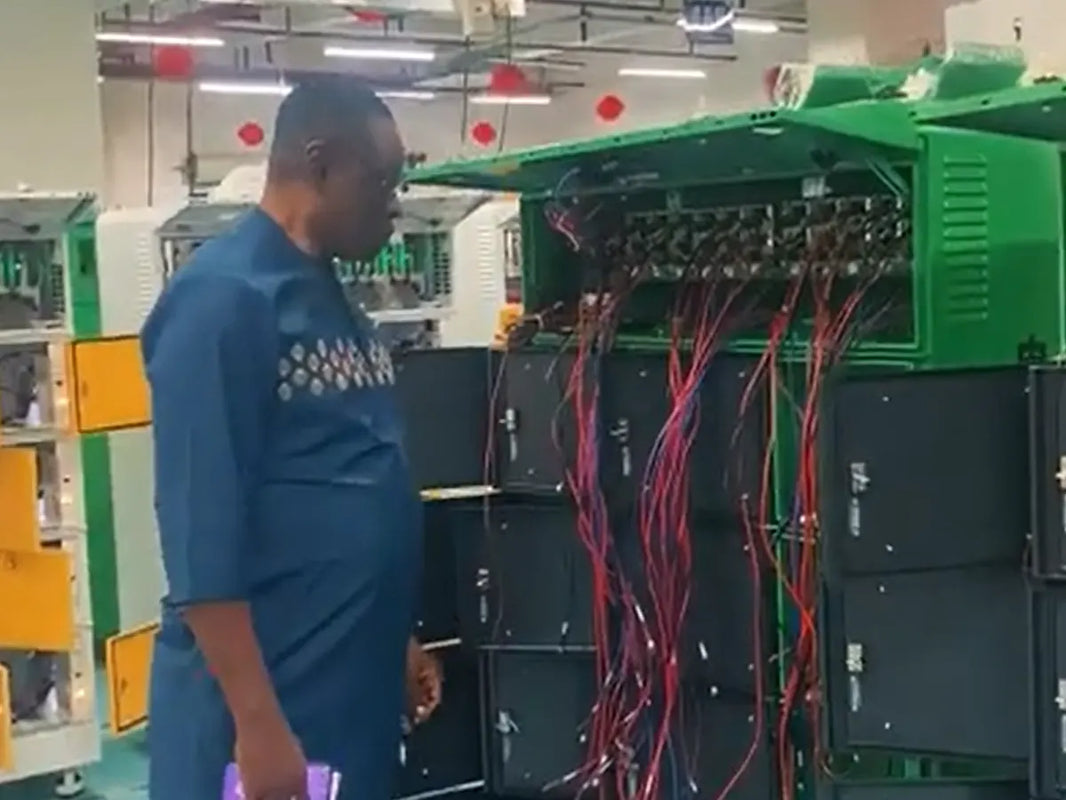
Main content:
Motorcycles are more than just a mode of transportation—they are a way of life for many riders, providing freedom, speed, and convenience for daily commuting. At the heart of every motorcycle lies its battery, the power source that drives the engine, lights, and electronic systems. A well-maintained battery ensures smooth rides, while a failing battery can lead to frustrating breakdowns, reduced performance, and even safety risks.
Recognizing the warning signs of a bad motorcycle battery is crucial for every rider. In this article, we’ll explore the key indicators of battery failure, the common causes, and practical solutions to extend your battery’s life and maintain reliable performance on the road.
How Long Does a Motorcycle Battery Last?
The lifespan of a motorcycle battery depends on multiple factors, including the type of battery, usage patterns, climate conditions, and maintenance habits. Understanding how long a battery typically lasts helps riders anticipate replacements before major problems occur.

- Lead-Acid Motorcycle Batteries
Lead-acid batteries are the most common types of battery due to their affordability and reliability. Under normal conditions, a lead-acid battery usually lasts 1 to 2 years. However, frequent deep discharging—charging only when the battery is nearly empty—can shorten its lifespan to just one year. By limiting discharge depth to around 50–70%, riders can extend the battery life closer to two years.
- Lithium Motorcycle Batteries
Lithium motorcycle batteries, such as the TYCORUN 73V 45Ah, generally offer longer service lives, often lasting 3 to 5 years. These batteries are lighter, charge faster, and provide consistent power. However, lithium batteries are more sensitive to charging practices and environmental conditions. Improper charging, extreme heat, or poor storage can shorten their life or permanently damage the battery.
Note: Lifespan estimates are approximate. Actual battery life varies depending on usage, maintenance, and environmental factors.
Top Warning Signs of a Bad Motorcycle Battery
A bad motorcycle battery usually gives warning signs long before it stops working completely. Paying attention to these signals can save you from getting stranded and prevent costly repairs.

1. Charging Problems
One of the first signs of a bad motorcycle battery is abnormal charging behavior. A healthy battery typically takes 8–10 hours to fully charge. If your battery appears full in just 1–2 hours—or even minutes—but loses power rapidly while riding, this is a clear sign of degradation.
2. Possible causes include:
- Damaged cells: Motorcycle batteries consist of multiple small cells. A failing cell reduces overall voltage and capacity, causing rapid charging and discharging.
- Aging materials: Over time, the battery’s active materials degrade and separate from the plates, reducing storage capacity.
- Lead-acid false charge: Older lead-acid batteries may indicate full charge in under 4 hours, but actual battery capacity may have dropped significantly.
Recognizing these charging issues early is key to preventing sudden failure.
3. Reduced Battery Performance
After about three years of use, a motorcycle battery may show noticeable performance decline. Indicators of a bad motorcycle battery include:
- Slower charging efficiency
- Reduced riding range
- Weak power output
A battery that struggles to maintain energy is no longer reliable. Attempting to repair or recondition it may provide only temporary relief. If performance does not improve after servicing, replacement is necessary.
4. Overheating and Swelling
A battery that becomes excessively hot during charging or starts to swell is a major warning sign. Overheating often occurs when active materials separate from the plates, increasing internal resistance and generating heat.
- Swelling or bulging is dangerous because it can:
- Deform the battery casing
- Damage surrounding components
- Cause leaks or fires
A swollen battery must be replaced immediately. Continuing to use it could result in a serious safety hazard.
5. Shorter Riding Range
As batteries age, their capacity naturally decreases. For example, a 48V 12Ah battery may initially support a 40–50 km range. If the range drops to 20–30 km after a full charge, it indicates significant degradation.
Capacity below 60% accelerates internal sulfation or crystallization, further reducing performance. At this stage, a bad motorcycle battery must be replaced to avoid getting stranded on the road.
6. Physical Damage
Physical damage is an obvious sign of a bad motorcycle battery. Check your battery for:
- Leaks: Electrolyte leakage in lead-acid batteries rapidly reduces capacity. Lithium battery leaks pose fire and explosion risks.
- Deformation: Warped or bulging cases often result from overcharging or internal faults.
Safety tip: Avoid touching leaking lithium battery fluid. Use a dry powder fire extinguisher if a fire occurs.
7. Voltage and Starting Issues
A bad motorcycle battery can struggle to provide sufficient voltage, causing:
- Difficulty starting the engine, especially in cold weather
- Rapid power drops while accelerating or using electrical systems
Testing tip: Use a multimeter to measure internal resistance. If resistance is more than three times the original value or the voltage drops over 10% under load, replacement is highly recommended.
All of these are clear signs of a bad motorcycle battery that requires immediate attention.
The Causes of a Bad Motorcycle Battery and What to Do?
Understanding why a motorcycle battery fails helps prevent future issues. Common causes include:

- Short circuits: Worn cables, exposed wires, or metal objects causing direct contact between battery terminals
- Leaks: Loose terminals, aging insulation, or water ingress
- Bulging: Overcharging, high temperatures, or manufacturing defects
Taking the correct action when you notice a failing battery is critical.
1. Handling Short Circuits Safely
If you detect a short circuit—burning odor or sudden power loss—disconnect the battery immediately. Do not continue riding.
- Minor short circuits: Check cables and insulate damaged wires with electrical tape
- Severe short circuits: Contact professional maintenance personnel. Avoid opening the battery yourself to prevent electric shock or explosions
2. Dealing With Leaks
- Tighten terminals and replace damaged cables
- Dry the battery in a ventilated area
- Test with a multimeter; consult professionals if leakage persists
3. Managing Swollen Batteries
- Store in a cool, dry place wrapped in non-conductive material
- Contact the manufacturer or certified recycling center
- Never puncture, crush, or dispose of a swollen battery improperly
Tips to Make Your Battery Last Longer
Good habits can significantly extend your battery life and reduce the risk of a bad motorcycle battery:

- Avoid deep discharge: Recharge before the battery is fully drained
- Use the correct charger: Prevent overvoltage and overcurrent
- Monitor charging: Disconnect when fully charged
- Avoid high temperatures: Store the bike in shaded, ventilated areas
- Regular inspection: Check for loose or corroded terminals
- Proper winter storage: Prevent prolonged inactivity
- Choose the right battery: Match specifications to your riding habits and climate
By following these tips, riders can maintain their motorcycle battery in top condition and avoid unexpected failures.
Conclusion
The battery is the heart of your motorcycle’s electrical system. Recognizing the signs of a bad motorcycle battery, from overheating, reduced range, physical damage, and voltage drops, is essential for both safety and reliability. Regular inspection, proper charging practices, and timely replacement can prevent accidents, costly repairs, and unnecessary stress.
Being aware of your battery’s condition allows you to ride confidently, extend the life of your battery, and enjoy a smooth, safe, and worry-free journey every time you hit the road.
FAQ
1. Does a weak battery affect motorcycle performance?
poor battery health can cause a range of issues, from difficulty starting the engine to unreliable electrical systems.
2. When should I replace my motorcycle battery?
The average life of a motorcycle battery is 2 to 5 years.
3. How do you check the health of a motorcycle battery?
Once charged, disconnect the battery from the charger, wait 30 mins, and see what the voltage off the charger drops to. Then wait another 12 hours to see where your battery's voltage falls after the remaining residual charge has dissipated. This will be a good indicator of your general battery's health.
Related Articles: Motorcycle battery voltage, Motorcycle battery charger, Motorcycle helmets,















